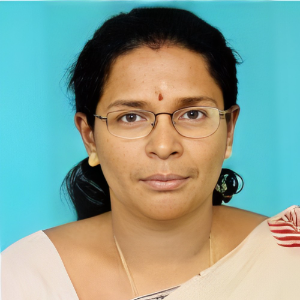Title : Prediction equation for Brinjal crop in Mannadipet soil series of Puducherry
Abstract:
To apply soil test based fertilizer recommendations, the soils are to be tested after each crop. Hence it has become necessary to predict the soil test values after the harvest of the crop. It is done by developing post-harvest soil test value prediction equations making use of the initial soil test values, applied fertilizer doses, yields and uptake of nutrients obtained following the methodology outlined by Ramamoorthy et al. (1971).The post-harvest soil test values were taken as dependent variable and a function of the pre-sowing soil test values and the related parameters like yield, uptake and fertilizer doses.
The functional relationship is as follows
YPHS=f (F, ISTV, yield/uptake)
Where, YPHS is the post-harvest soil test value; F is the applied fertilizer nutrient and ISTV is the initial soil test value of N/P/K. The equation will take the mathematical form,
YPHS= a+b1F+ b2IS+b3 yield/uptake
Where, a is the absolute constant and b1, b2 and b3 are the respective regression co-efficients. Using these regression equations, the post-harvest soil test values of N, P and K were predicted after brinjal crop.
The results indicated that under NPK alone treatments, in the case of prediction of KMnO4-N, 87.7 and 87.8 per cent of the variations for KMnO4-N was accounted by the fruit yield and nitrogen uptake respectively. With respect to Olsen-P, the variation was 76.8 per cent with fruit yield and 77.8 per cent with phosphorus uptake. The variation of NH4OAc-K was 89.2 per cent with fruit yield and 90.8 per cent with potassium uptake were accounted by soil potassium and fertilizer potassium, yield and uptake respectively. When the field was imposed with NPK + FYM @ 6.25 t ha-1, 81.4 and 80.6 per cent of the variations for KMnO4-N was accounted by the fruit yield and nitrogen uptake respectively. The variation in post-harvest soil nitrogen was accounted by soil nitrogen, fertilizer nitrogen, fruit yield and uptake of nitrogen. With respect to Olsen-P, the variations were 87.1 and 85.9 per cent with brinjal fruit yield and phosphorus uptake were accounted by soil phosphorus and fertilizer phosphorus. The variation of NH4OAc-K was 84.7 per cent with fruit yield and 84.8 per cent with potassium uptake were accounted by soil potassium and fertilizer potassium, yield and uptake respectively. When the field was imposed with NPK + FYM @ 12.5 t ha-1, 99.8 per cent of the variations for KMnO4-N was accounted by the fruit yield and nitrogen uptake respectively. With respect to Olsen-P, the variation was 80.9 and 78.0 per cent with fruit yield and phosphorus uptake respectively. In the case of NH4OAc-K the variation was 90.2 and 87.8 per cent with fruit yield and potassium uptake. Significantly higher R2 `values recorded for the post-harvest soil test values prediction equations proved that these equations can be used with much confidence for predicting the soil test values after rice.
Key words: Post harvest soil test value, Brinjal yield, Uptake.



